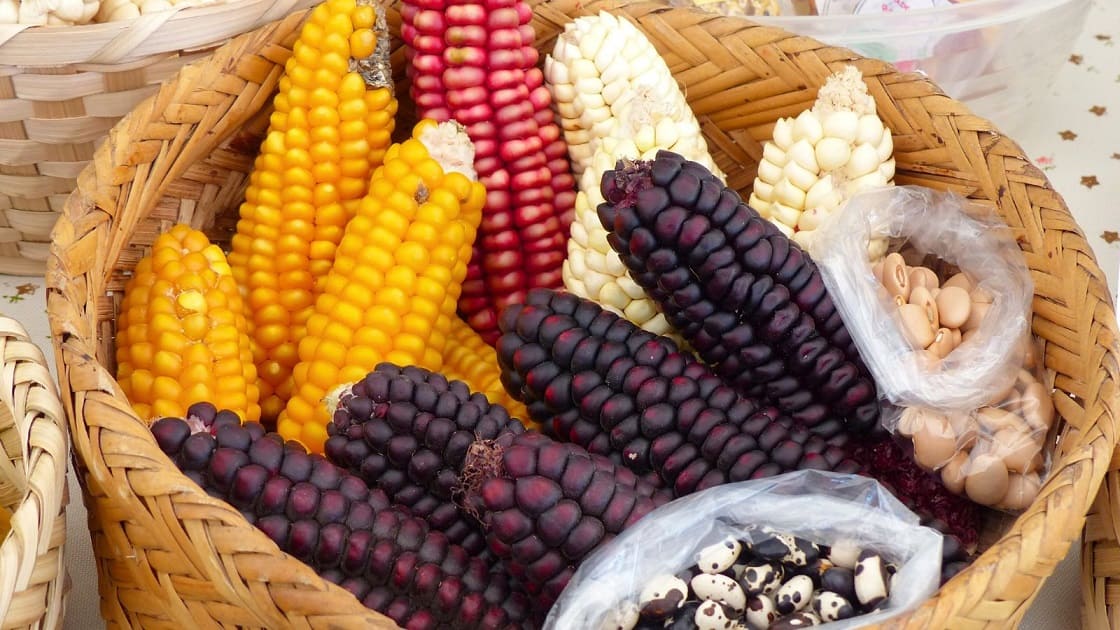Picture this: you’re standing in a farmers market, faced with ears of corn in every color imaginable—deep purple kernels that look like jewels, pristine white cobs, and traditional yellow varieties alongside striking multicolored ears that seem too beautiful to eat.
If you thought corn was just corn, prepare to have your world opened to one of agriculture’s most diverse and fascinating crops.
Most of us know corn primarily as that buttery summer staple we slather with salt at barbecues, but this remarkable grain tells a story thousands of years in the making.
From its humble origins as a wild grass in ancient Mexico to becoming one of the world’s most important crops, corn has evolved into dozens of distinct types, each with unique characteristics and culinary purposes.
By the end of this guide, you’ll understand not just what makes each type special, but how to choose, grow, use, and source different varieties to transform your cooking and maybe even your garden.
👉 Discover 25+ Types of Mushrooms You Should Try (And How to Cook Them)
The Ancient Origins: From Wild Grass to Global Staple
Corn’s journey began approximately 8,000 to 9,000 years ago in what is now Central Mexico, where indigenous peoples accomplished one of agriculture’s greatest transformations.
They took a wild grass called teosinte—with tiny, rock-hard seeds barely an inch long—and through skilled plant breeding techniques, gradually developed it into the corn we recognize today.
This transformation didn’t happen overnight. By about 6,000 years ago, corn had taken on its familiar form with kernels arranged around a central cob. The earliest version was actually popcorn, which quickly spread throughout North and South America as communities shared seeds and knowledge.
Indigenous peoples continued developing new varieties, adapting this tropical grass to thrive in diverse environments from desert valleys to northern plains.
The crop’s impact was revolutionary. Corn became so central to many indigenous cultures that it wasn’t just food—it was sacred, woven into creation stories and spiritual practices. The Mayans literally believed humans were made from corn, and this reverence reflected corn’s role as the backbone of their civilization.
Understanding Corn: It’s All About the Kernel
Before diving into specific types, it’s helpful to understand what actually makes different corns unique. Think of a corn kernel like a tiny, sophisticated package with distinct layers, each serving a specific purpose.
The outer layer, called the pericarp, acts like nature’s protective wrapper. Inside, you’ll find the endosperm—the starchy part that makes up most of the kernel—which can be either hard and glassy or soft and chalky. At the heart lies the germ, containing oils and proteins that give corn much of its flavor and nutritional value.
The magic happens in how these components are arranged and their relative hardness. Some varieties pack hard starch around soft centers, others are uniformly soft throughout, and still others create complex patterns that determine everything from how the corn pops to how easily it grinds into meal.
This structural diversity explains why you can’t just grab any corn and expect it to work for every purpose. Sweet corn picked at the wrong time won’t be tender, field corn won’t taste good fresh, and regular corn kernels will never pop properly no matter how long you heat them.
The Big Five: Core Corn Types You Need to Know
Sweet Corn: The Garden Superstar
Sweet corn represents one of nature’s most delicious mutations. Unlike other corn types that convert their sugars into starch as they mature, sweet corn carries genetic mutations that keep those sugars intact, creating the tender, juicy kernels we love straight off the cob.

The key to sweet corn lies in timing. It’s harvested during what’s called the “milk stage”—press your fingernail into a kernel, and if milky liquid comes out, it’s perfect. Wait too long, and those sugars start converting to starch, leaving you with tough, less flavorful kernels.
Modern sweet corn comes in several categories based on sugar content and storage life. Traditional sugary (su) varieties offer classic corn flavor but need to be eaten quickly—there’s truth to the old saying about having the water boiling before you pick the corn.
These varieties lose their sweetness rapidly at warm temperatures, with the sugar conversion happening ten times faster at 70°F than at 32°F. Sugary enhanced (se) varieties pack more sugar and stay fresh longer, while supersweet (sh2) types contain the highest sugar levels and can keep their sweetness for up to a week in the refrigerator.
The nutritional profile of sweet corn includes decent protein levels, fiber, and essential vitamins, though the exact content varies by variety. Yellow varieties tend to be higher in vitamin A precursors, while colored varieties often contain additional antioxidants.
Best uses: Fresh eating, grilling, salads, soups, freezing, and any recipe where you want that classic sweet corn flavor and tender texture.
Dent Corn: The Agricultural Workhorse
Drive past cornfields in the American Midwest, and you’re likely seeing dent corn—the most widely grown corn type in the world. Named for the characteristic dent that forms on each kernel as it dries, this variety makes up over 90% of all corn production in the United States.
Dent corn might not win beauty contests when fresh, but it’s incredibly versatile once processed. Its high starch content and lower sugar levels make it ideal for everything from animal feed to ethanol production. A single bushel of dent corn can produce 2.8 gallons of ethanol fuel, 18 pounds of high-protein animal feed, and various other byproducts.
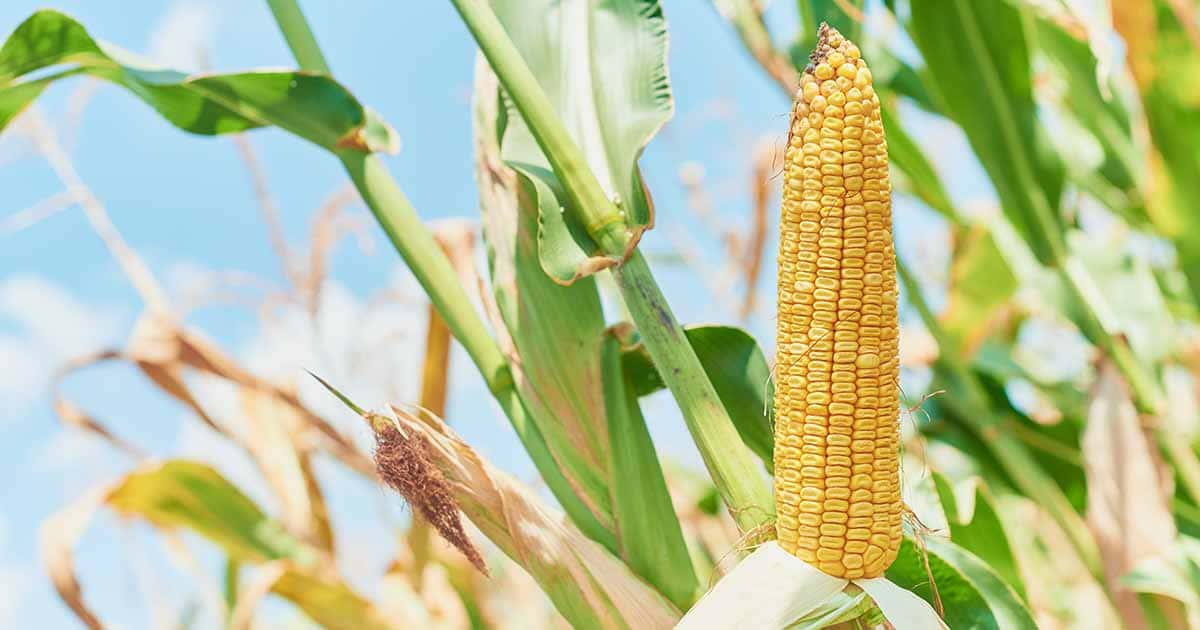
The genius of dent corn lies in its structure: hard starch surrounds the kernel’s sides while soft starch fills the center. As it dries, the soft center shrinks more than the hard exterior, creating that telltale dent. This composition makes it perfect for grinding into various textures, from fine meals to coarse grits.
For home use, dent corn must be properly dried to about 14% moisture content for safe storage. When stored correctly in airtight containers, it can last for years without spoilage.
Best uses: Cornmeal, grits, masa (when nixtamalized), tortilla chips, animal feed, and industrial products. When harvested young, it can be used for elote (Mexican street corn) though it won’t be as sweet as sweet corn.
Flint Corn: The Colorful Survivor
Often called “Indian corn,” flint corn captures attention with its stunning array of colors—deep reds, blues, purples, whites, and yellows, sometimes all on the same ear. But don’t let its decorative appearance fool you; this is serious food with a long history.
Flint corn gets its name from its rock-hard exterior, which gives kernels a glassy, translucent appearance. This hardness serves multiple purposes: it makes the corn incredibly resistant to insects and rodents, allows for long-term storage without spoilage, and creates the complex flavors prized in traditional dishes.
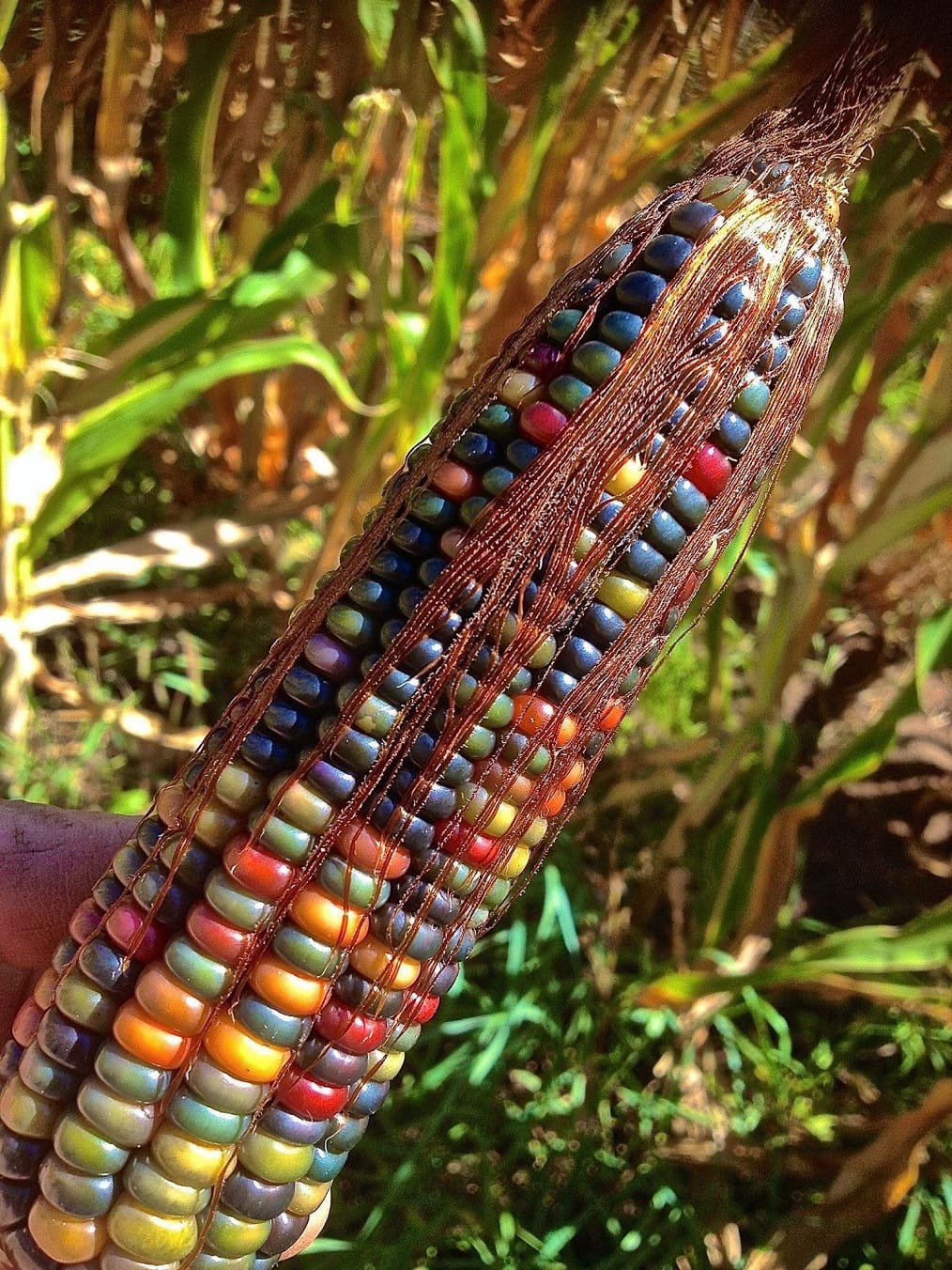
The tough exterior requires special handling. While flint corn can be eaten fresh during its early “milk stage,” it’s typically used dried and ground. The hard shell and rich oils create complex, nutty flavors that are particularly prized in traditional dishes. Many flint varieties also offer superior nutritional profiles compared to modern hybrid corns.
Best uses: Polenta, coarse cornmeal, hominy (when nixtamalized), decorative purposes, and grinding into flour. Some varieties can be popped, though they crack rather than fully expand like popcorn.
Popcorn: The Ancient Snack
Popcorn represents one of the oldest forms of domesticated corn still in cultivation today, with specimens dating back over 5,000 years. It’s essentially a specialized type of flint corn, but with a crucial difference: the right balance of moisture and shell hardness to create that satisfying “pop.”
Each popcorn kernel contains about 14% moisture. When heated to around 400°F, this moisture turns to steam, building pressure inside the hard shell until it literally explodes the kernel inside-out. The white fluff you see is the kernel’s starchy interior, expanded to many times its original size.
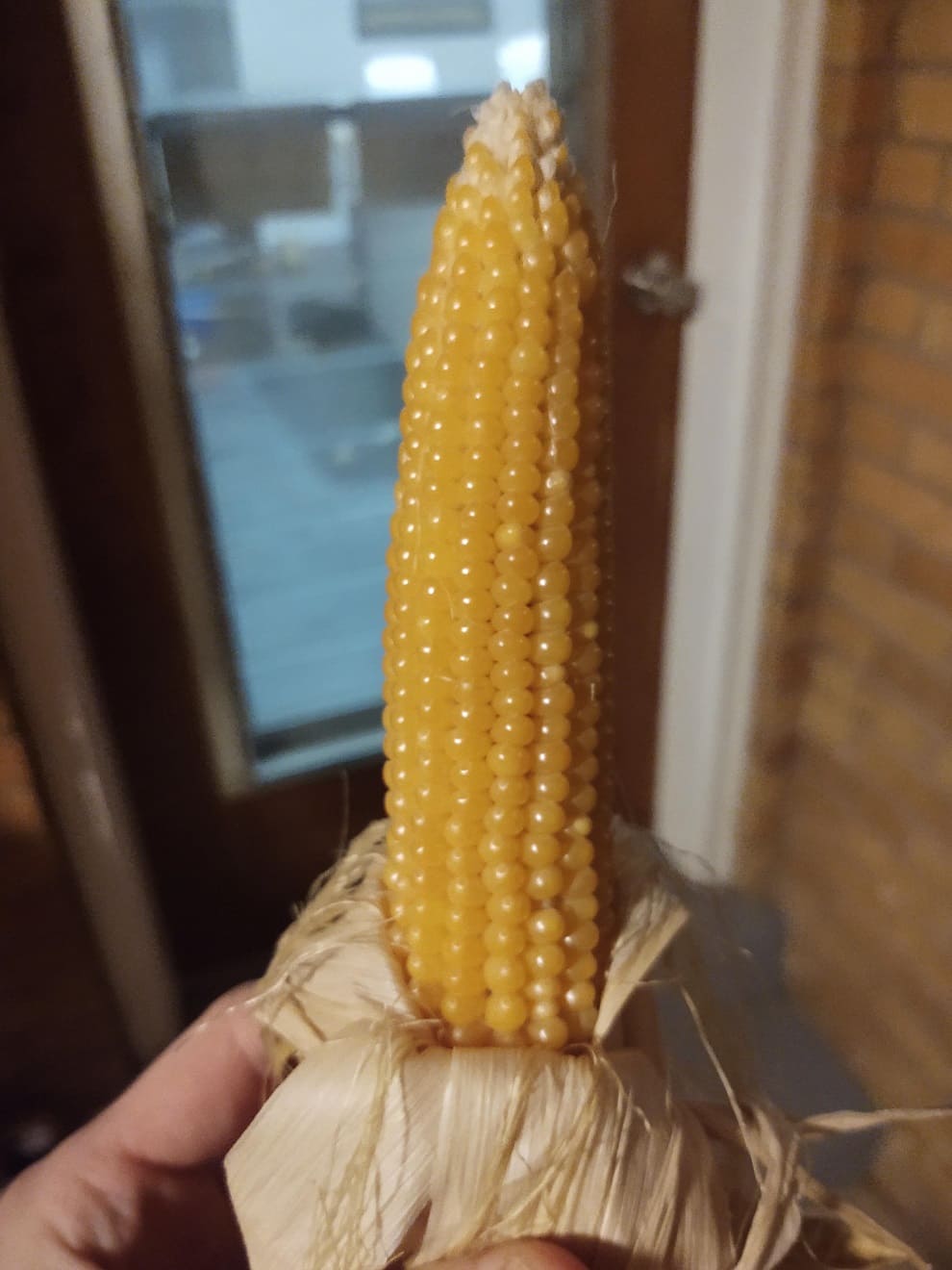
Proper storage is crucial for popcorn quality. Too little moisture and kernels won’t pop; too much and they may mold. Home-grown popcorn should be dried on the cob until kernels are hard, then stored in airtight containers. You can test popping quality by trying a few kernels—good popcorn should pop to 35-40 times its original size.
Interestingly, the color of popcorn kernels—whether yellow, white, red, or even deep purple—doesn’t affect the final popped color. All popcorn pops white because the inner endosperm is always white, regardless of the shell color.
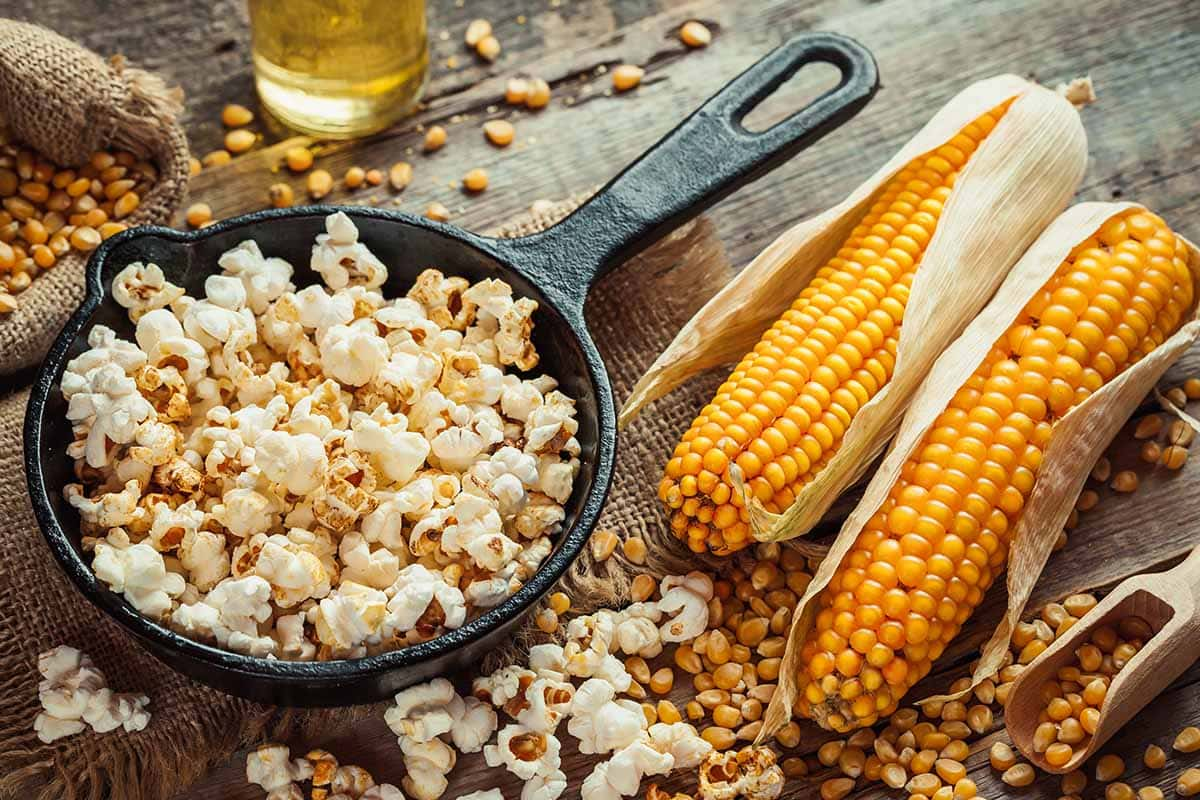
Best uses: Snacking, confections, grinding into specialty cornmeals, and any recipe calling for popped corn. Different varieties pop into different shapes—some create delicate “butterfly” flakes, while others form compact “mushroom” shapes preferred for caramel coating.
Flour Corn: The Baker’s Choice
Flour corn represents the ultimate in corn versatility for home food preparation. Composed mainly of soft starch with minimal hard exterior, these kernels practically beg to be ground into fine, silky meal that’s perfect for baking and cooking.
This soft composition makes flour corn particularly easy to digest and process by hand—a crucial advantage for traditional societies. The flavor tends to be more delicate than flint or dent varieties, though colored versions (especially blue and red types) offer more robust, nutty notes along with additional nutritional benefits from their pigments.
The soft nature of flour corn means it must be dried carefully and stored properly to prevent mold and pest damage. However, when processed correctly, it produces the finest texture cornmeal possible without industrial equipment.

Best uses: Fine cornmeal for baking, tortillas (when nixtamalized), pinole (sweetened cornmeal drink), polenta, and any application where you want smooth texture and mild flavor.
Additional Corn Types: Specialized and Unique Varieties
Beyond the foundational five types, several other distinct corn varieties deserve recognition for their unique characteristics and specialized uses.
Waxy Corn: The Starch Specialist
Waxy corn represents a fascinating genetic variation discovered in China in 1908 and later found in American corn varieties. Despite its name, waxy corn isn’t actually waxy to the touch—it gets this designation from the waxy appearance of its endosperm when cut in cross-section.
The crucial difference lies in starch composition. Regular corn contains about 73% amylopectin and 27% amylose starches, while waxy corn is composed entirely of amylopectin. This creates dramatically different cooking properties and industrial applications.
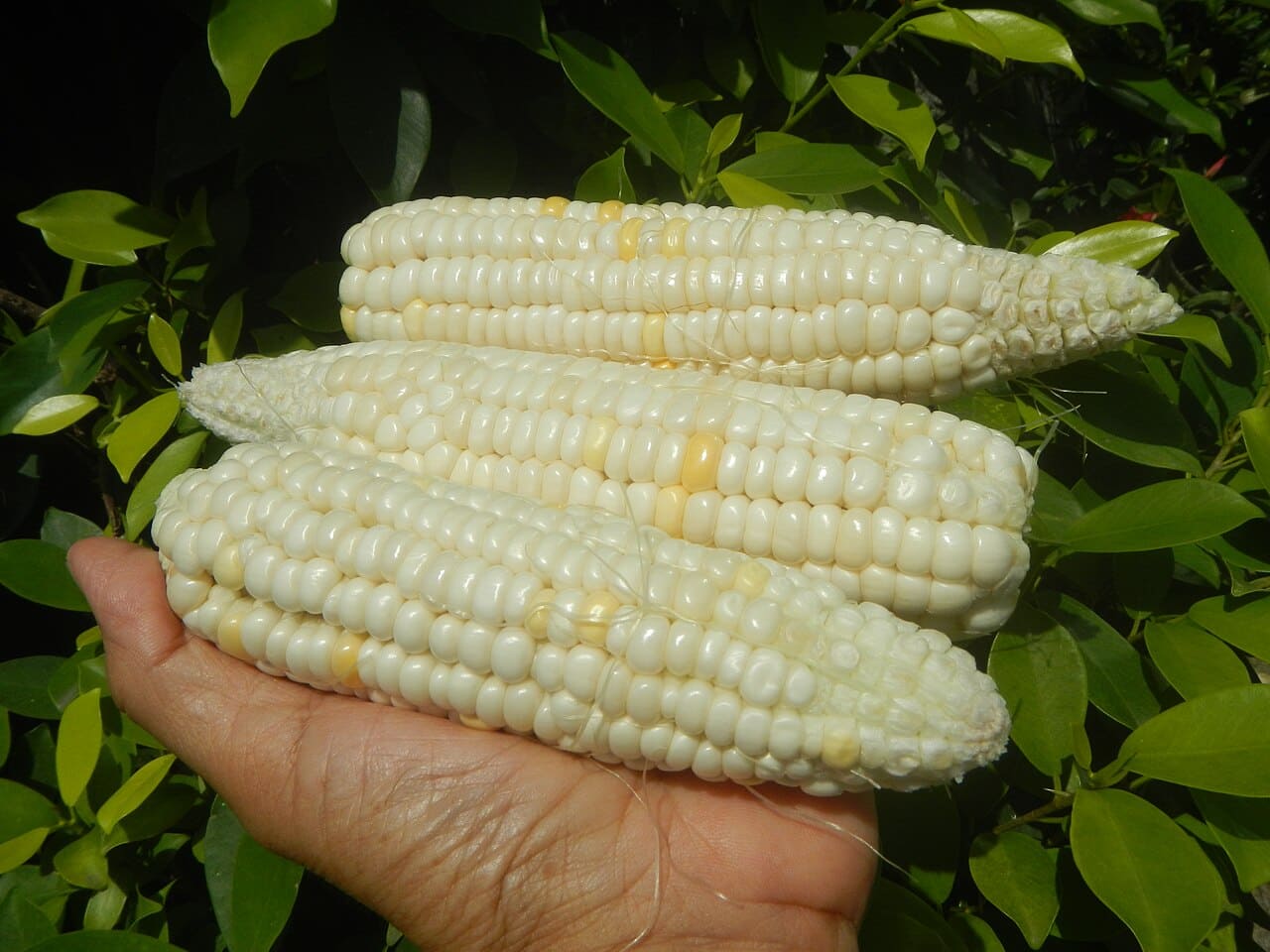
You can easily test for waxy corn using iodine solution—regular cornstarch turns blue when treated with iodine, while waxy cornstarch turns reddish-brown. This simple test also works on pollen, making it useful for plant breeding programs.
Modern waxy corn hybrids achieve yields comparable to regular dent corn, making them commercially viable. The corn requires isolation from other types during growing, harvesting, and storage to maintain its unique properties.
Best uses: Industrial starch production, food thickeners and stabilizers (found in puddings, pie fillings, and sauces), adhesives for envelopes and paper products, and specialized livestock feed for dairy cattle.
High-Lysine Corn: The Nutritional Breakthrough
High-lysine corn, also known as Quality Protein Maize (QPM), represents a significant advancement in corn nutrition. Discovered in 1964 through the opaque-2 gene mutation, this corn type dramatically improves protein quality by increasing lysine content—an essential amino acid often limited in regular corn.
The original opaque-2 varieties had soft, chalky kernels that were prone to insect damage and storage problems. Modern breeding programs have developed modified versions with harder kernels while maintaining the improved protein quality. These newer varieties combine the nutritional benefits with better agronomic characteristics.
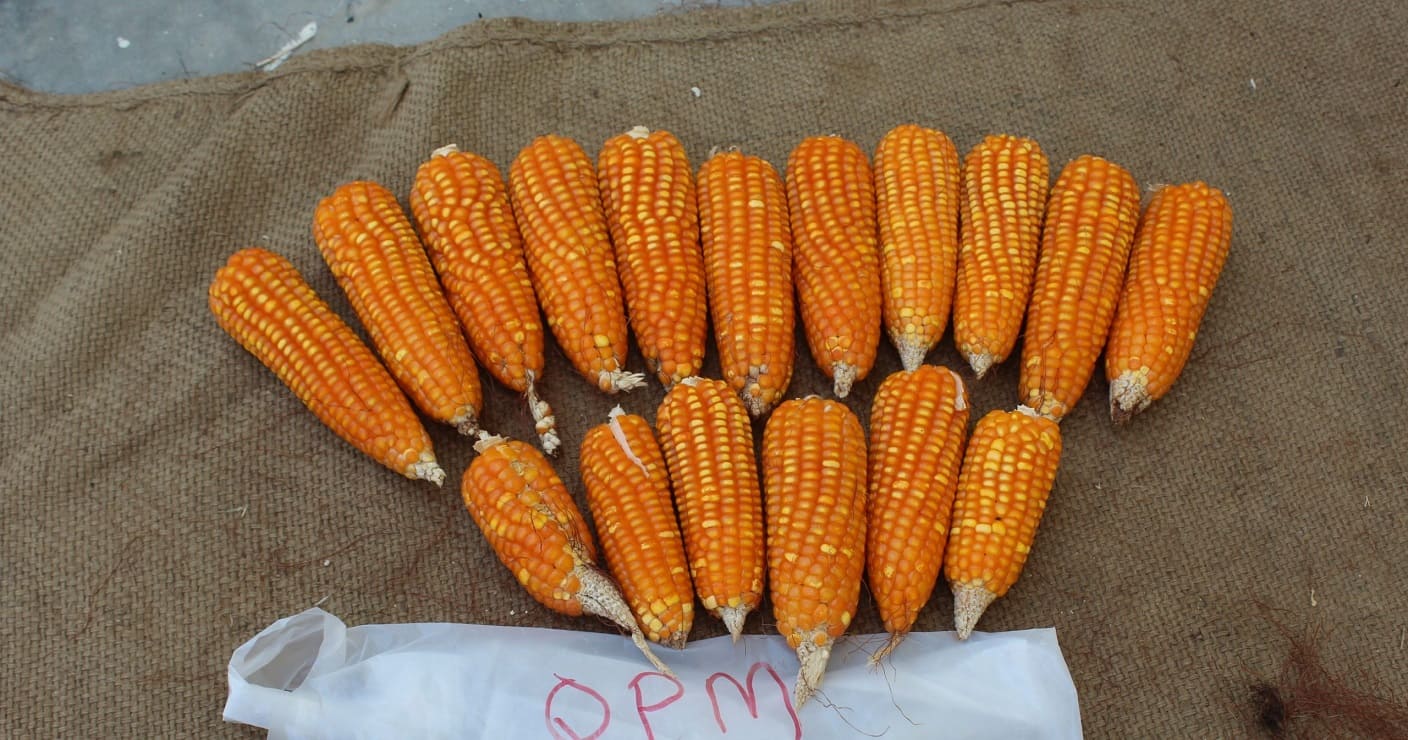
High-lysine corn typically yields 7-10% less than regular corn varieties, but the improved protein quality can be crucial in areas where corn is a dietary staple. The enhanced nutrition is particularly valuable for feeding young animals and in regions where high-quality protein supplements are scarce or expensive.
The protein improvement is substantial—high-lysine corn can provide complete protein nutrition comparable to milk protein, making it especially valuable in developing countries where corn constitutes a large portion of the diet.
Best uses: Human food in corn-dependent regions, specialty livestock feed for poultry and swine, areas where protein supplementation is expensive or unavailable, and nutritional programs addressing protein malnutrition.
Pod Corn: The Botanical Curiosity
Pod corn presents one of corn’s most unusual mutations, where each individual kernel develops its own protective husk (called glumes), similar to many wild grasses. This trait results from a mutation in the tunicate gene that affects leaf development in the ear structure.
The appearance is striking—instead of naked kernels arranged on a cob, each kernel is individually wrapped in small, papery husks, giving the entire ear a distinctive, almost artichoke-like appearance. The ears are also enclosed in normal husks, creating multiple layers of protection.
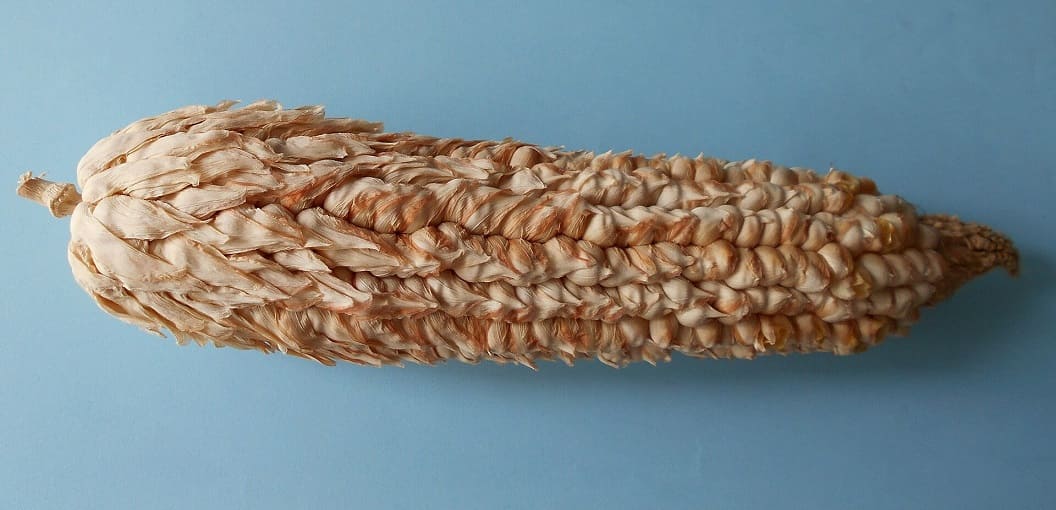
Pod corn is typically highly self-sterile when grown in pure form, so commercial pod corn is usually heterozygous (carrying one copy of the pod gene). This genetic instability means pod corn can exhibit characteristics of other corn types—it might be sweet, dent, flint, or even popcorn in endosperm type while maintaining the pod characteristic.
The individual husks make processing extremely time-consuming, as each kernel must be manually dehusked. This impracticality, combined with generally lower yields, means pod corn serves no commercial food purpose despite being perfectly edible.
Best uses: Ornamental and decorative purposes, genetic research, educational demonstrations of corn genetics, and novelty plantings. Some specialty growers offer pod corn for fall decorations and botanical curiosity.
Baby Corn: The Early Harvest
Baby corn isn’t technically a separate corn type but rather any corn variety harvested at an extremely young stage—typically 1-3 days after silk emergence and long before normal maturity. The entire ear, including the tender cob, is edible at this stage.
Most baby corn comes from regular dent corn varieties, though some producers use specific varieties selected for uniform small ear size and tender texture. The key is harvesting at precisely the right moment when ears are 2-4 inches long and kernels are barely formed.
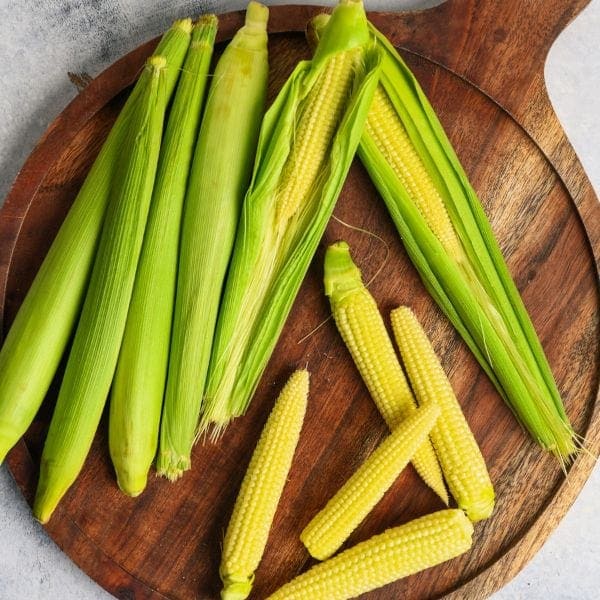
Production requires intensive labor since each plant may produce multiple small ears that must be harvested by hand every few days. The short harvest window and manual labor make baby corn more expensive than mature corn, but its unique texture and convenience in cooking justify the premium for many uses.
Baby corn has a mild, slightly sweet flavor and distinctive crunchy texture. Unlike mature corn, the entire structure is tender enough to eat raw or with minimal cooking.
Best uses: Asian stir-fries, salads, pickling, appetizers, and any dish where you want corn flavor with crunchy texture. Particularly popular in Thai, Chinese, and other Asian cuisines where it’s often used whole in vegetable medleys.
Specialty Varieties: Colors, Heritage, and Regional Treasures
Beyond the major structural types lie dozens of specialty varieties that offer unique colors, flavors, and cultural significance. These heirloom and regional types often represent centuries or even millennia of careful selection by indigenous communities.
Colorful Varieties and Their Benefits
Blue and purple corns aren’t just beautiful—they’re nutritional powerhouses. Their deep colors come from anthocyanins, powerful antioxidants that may offer health benefits including better blood sugar control and increased protein content compared to yellow corn.
These varieties often have lower glycemic indexes, making them potentially better choices for people managing diabetes.
Hopi Blue corn, cultivated by the Hopi people of Northern Arizona for generations, produces striking blue tortillas and meal with a distinctive nutty flavor.
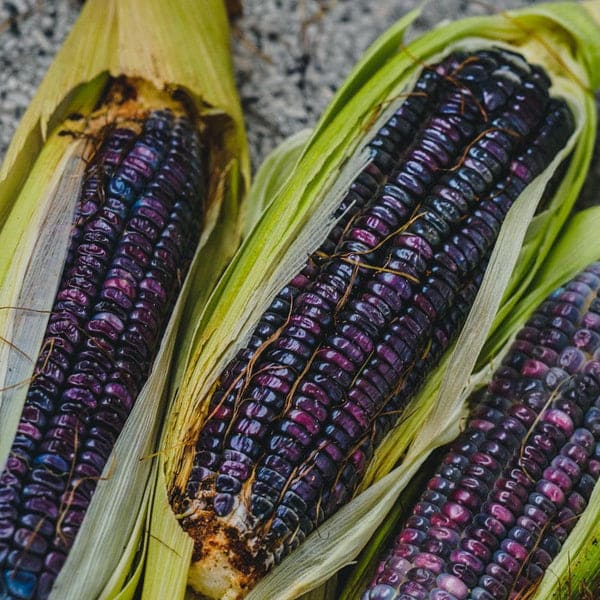
Peruvian purple corn creates brilliant purple beverages and has been used in traditional medicine for centuries.
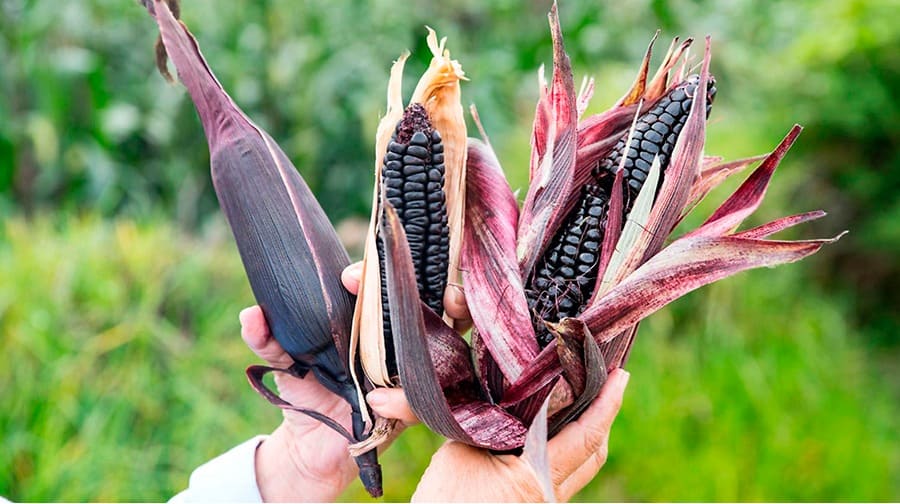
👉 Here’s How to Grow Purple Tree Collards: The Ultimate Guide to Year-Round Greens
Regional Specialties
Different regions have developed corn varieties perfectly adapted to their specific climates and culinary traditions. Mexico alone maintains over 60 distinct heirloom varieties, from the large-kerneled Cacahuazintle used specifically for pozole, to the cone-shaped Chapalote with its rich, earthy flavor.
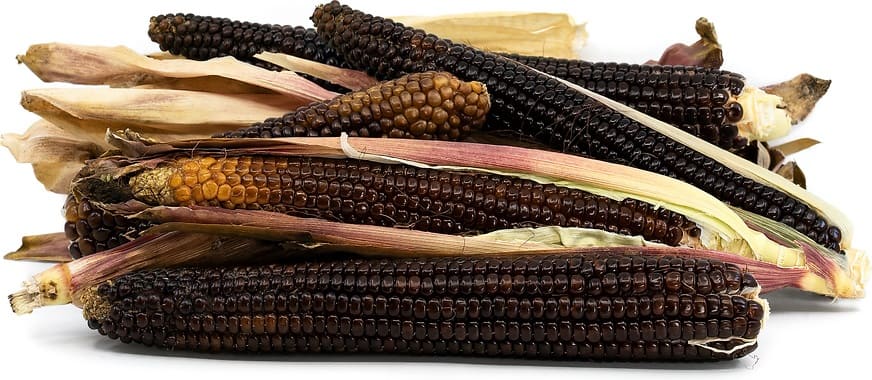
Peruvian choclo produces enormous kernels—some as large as lima beans—that create the distinctive corn nuts you might find in specialty stores. These varieties often can’t be successfully grown elsewhere because they’ve adapted to very specific elevation, rainfall, and soil conditions over thousands of years.

The Nixtamalization Game-Changer
Many traditional corn preparations rely on a process called nixtamalization—treating dried corn with an alkaline solution (typically lime or wood ash) to remove the hull and soften the kernels. This isn’t just about texture; nixtamalization dramatically improves corn’s nutritional profile by making B vitamins more bioavailable and adding calcium.
The treated corn, called hominy, can be eaten whole, ground into masa for tortillas and tamales, or processed into grits. The process also develops that distinctive flavor we associate with authentic tortillas and corn chips—a rich, slightly mineral taste that straight cornmeal can’t replicate.

Growing Your Own Corn: Practical Considerations
Growing corn successfully requires understanding both the basics and some crucial details that can make or break your harvest.
Space and Planting Requirements
Corn is wind-pollinated, which means it needs to be planted in blocks rather than single rows for proper pollination. Each silk must receive pollen to develop a kernel, so inadequate pollination results in ears with missing kernels. Plan for at least a 4×4 block of plants, though 6×6 or larger is better for consistent results.
Plant spacing matters significantly. Rows should be 2.5 to 3 feet apart, with plants spaced 8-10 inches apart within rows. This spacing ensures good air circulation while allowing sufficient plant density for pollination.
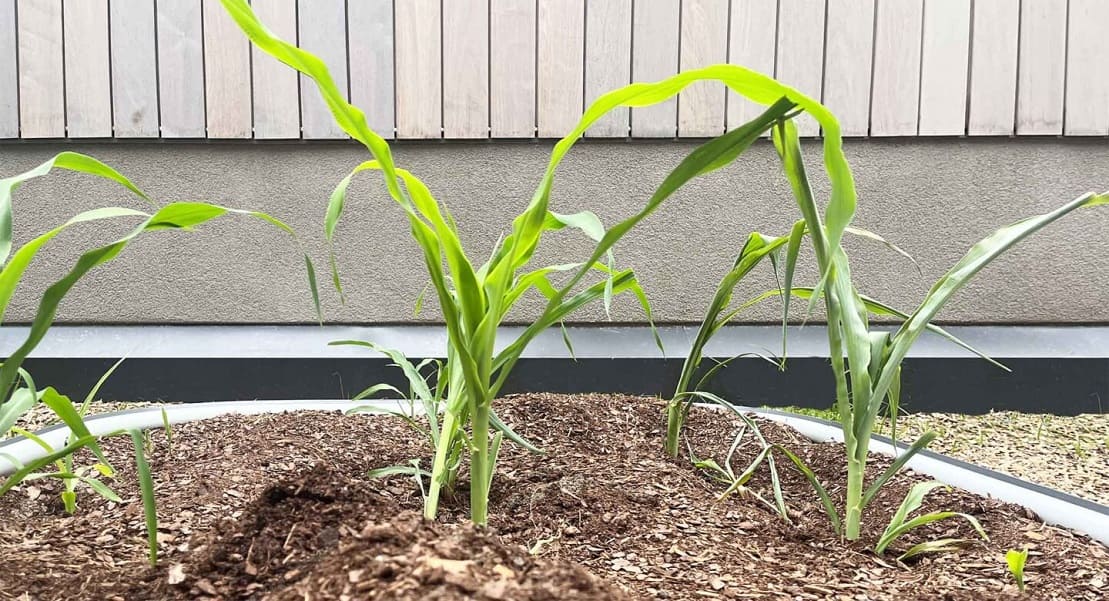
Soil and Climate Needs
Corn thrives in well-drained, fertile soil with a pH between 6.0 and 6.8. The soil should be rich in organic matter—incorporating aged manure or compost the fall before planting provides both nutrients and improved water retention.
Temperature requirements vary by type. Sweet corn needs soil temperatures of at least 55-60°F for good germination, while supersweet varieties require even warmer conditions (65-70°F) due to their lower starch reserves. Dent and flint corns are generally more tolerant of cooler conditions once established.
Isolation and Cross-Pollination
If you’re growing multiple corn types or planning to save seeds, isolation becomes crucial. Different corn types will cross-pollinate if their flowering periods overlap, affecting both flavor and characteristics.
For home gardens, maintain at least 25 feet between different corn types. Larger plantings need 200 feet or more. Alternatively, you can plant varieties with different maturity dates so they flower at different times, providing natural isolation.
This is particularly important with sweet corn, where cross-pollination with field corn can result in starchy, less sweet kernels. Supersweet varieties are especially sensitive and should be isolated from all other corn types.
Succession Planting for Continuous Harvest
Since each corn planting produces harvestable ears for only 7-10 days, succession planting extends your harvest season. Plant small amounts of the same variety every 7-10 days, or plant different varieties with staggered maturity dates simultaneously.
👉 Here’s How to Grow a Three Sisters Garden: Corn, Beans, Squash Together
Processing and Preservation: From Kernel to Kitchen
Drying and Storage Methods
Proper drying is essential for long-term corn storage. Field corns should be left on the plant until husks are brown and kernels are hard. For areas with wet falls, harvest ears when kernels reach about 20% moisture and finish drying indoors.
Create drying racks or hang braided ears in a warm, dry, well-ventilated area. Properly dried corn (14% moisture or less) can be stored in airtight containers for years. Test dryness by trying to dent kernels with your fingernail—properly dried corn won’t dent.
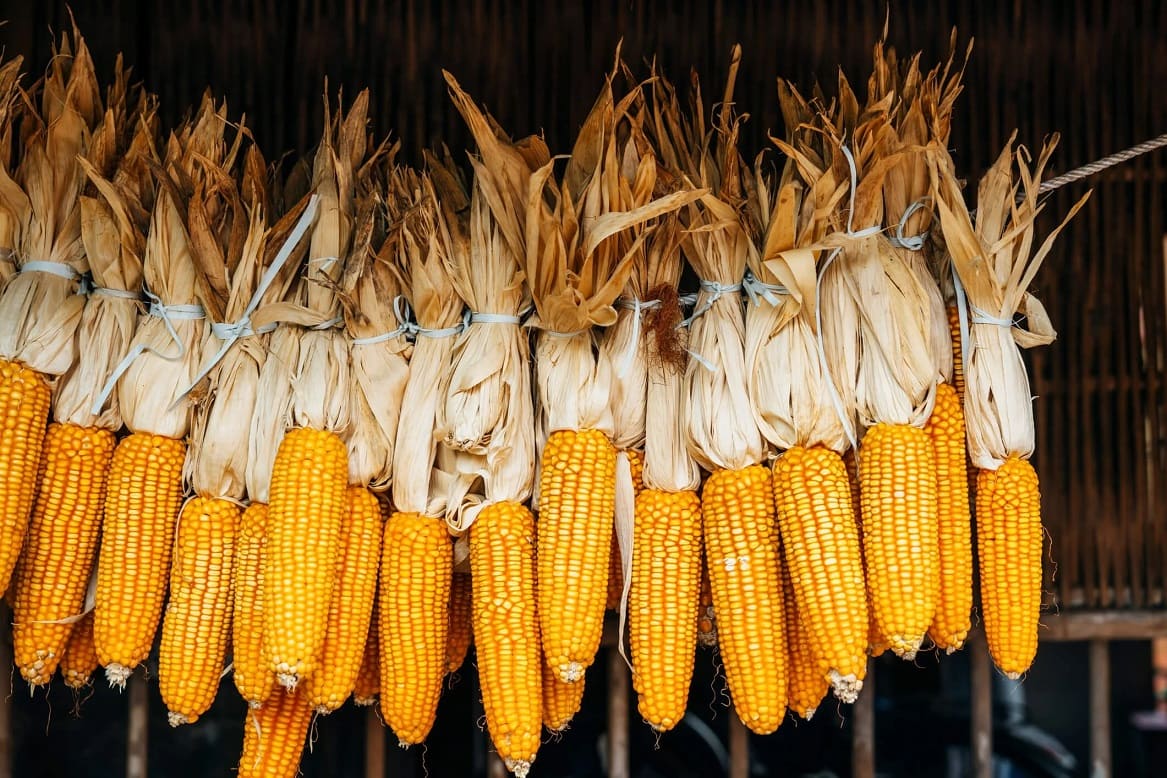
👉 Here’s How to Dehydrate Apples at Home: Easy Steps for Perfect Results
Home Processing Equipment
For grinding corn at home, you have several options depending on your needs and budget. Hand-crank grain mills provide excellent control and can handle any corn type from coarse grits to fine flour.
Electric grain mills work faster but cost more. For small quantities, high-powered blenders or even coffee grinders can work, though they produce less consistent results.
When grinding, consider toasting the kernels first for enhanced flavor. This works particularly well with dent and flint corns destined for cornbread or polenta.
The Nixtamalization Process
Many traditional corn preparations rely on nixtamalization—treating dried corn with an alkaline solution to remove the hull and soften the kernels. While it sounds intimidating, the process is straightforward and dramatically improves both flavor and nutrition.
The basic process involves boiling dried corn with food-grade lime (cal) or wood ash lye, then rubbing off the loosened hulls. The resulting hominy can be eaten whole, ground into masa for tortillas and tamales, or processed into grits. This process makes B vitamins more bioavailable and adds calcium to the diet.
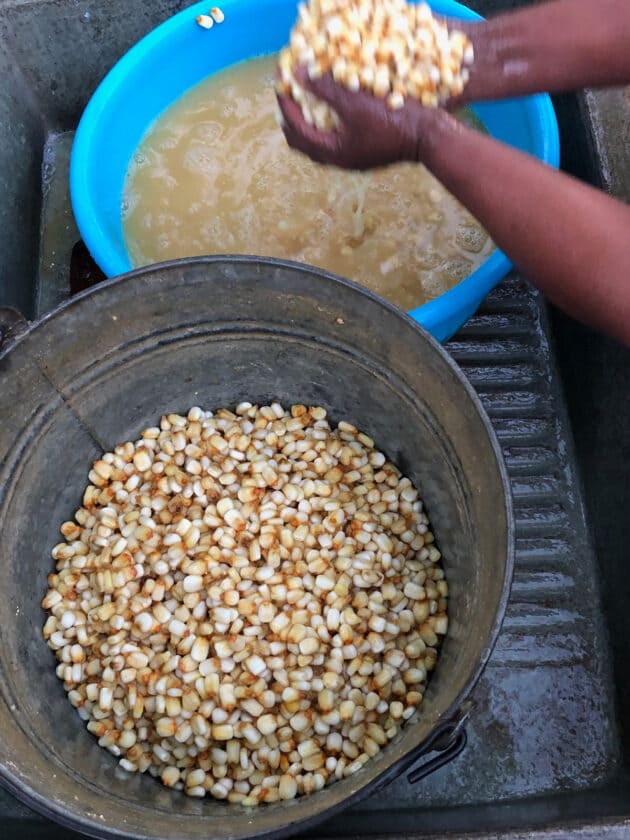
For safety, always use food-grade lime (calcium hydroxide) available from Mexican grocery stores or online suppliers. Never use construction lime, which contains dangerous impurities.
Sourcing and Selection: Finding Quality Corn
Where to Find Specialty Varieties
Finding diverse corn varieties requires knowing where to look. Farmers markets often offer the widest selection of fresh varieties, especially during late summer. Many vendors can tell you exactly which varieties they’re growing and their specific characteristics.
For seeds, specialty catalogs offer the best selection of heirloom and unusual varieties. Companies like Johnny’s Seeds, Baker Creek, and Native Seeds/SEARCH maintain extensive collections of traditional varieties. Many state universities also maintain corn collections and occasionally make seeds available to home gardeners.
Ethnic groceries can be goldmines for dried corn varieties. Mexican markets often carry whole dried corn for nixtamalization, while Asian markets may have specialty popcorns and other unique types.
Quality Indicators
When selecting fresh corn, look for bright green husks that fit snugly around the ear. The silk should be moist and slightly sticky, not dry or brown. Kernels should be plump and arranged in even rows, feeling firm when gently pressed.
For dried corn, kernels should be uniform in size and color with no signs of mold, insect damage, or excessive cracking. Properly dried corn has a hard, glassy appearance and should not dent when pressed with a fingernail.
Seasonal Availability
Sweet corn season varies by region but generally runs from July through October in most temperate areas. Early varieties are available first, followed by mid-season and late varieties. Planning your garden or shopping around these cycles ensures the best quality and flavor.
Dried corn for processing is typically available year-round from specialty suppliers, with the best selection appearing after harvest season in late fall and winter.
Nutritional Profiles and Health Considerations
Comparing Nutritional Values
Different corn types offer varying nutritional profiles. Sweet corn provides readily available sugars and decent vitamin C levels when fresh, but loses nutritional value quickly after harvest. Yellow varieties contain more beta-carotene (vitamin A precursor) than white varieties.
Colored corns—particularly blue, red, and purple varieties—contain anthocyanins and other antioxidants that may offer health benefits including better blood sugar control and anti-inflammatory effects. These varieties often have lower glycemic indexes than yellow or white corn.
Whole grain preparations (where the germ and bran are retained) provide significantly more nutrition than refined corn products. Stone-ground meals typically retain more nutrients than industrially processed versions.
Processed vs. Whole Grain Benefits
Nixtamalized corn offers superior nutrition to raw corn in several ways. The alkaline treatment makes niacin (vitamin B3) more bioavailable, reducing the risk of pellagra that historically affected populations dependent on untreated corn. It also adds calcium to the diet and improves protein quality.
However, some processing methods can reduce nutritional value. Industrial corn processing often removes the germ and bran, eliminating much of the corn’s natural oils, vitamins, and minerals.
Troubleshooting Common Issues
Growing Problems
Poor pollination is the most common corn growing problem, resulting in ears with missing kernels. Ensure adequate plant density and avoid planting single rows. Hot, dry weather during silk formation can also reduce pollination success.
Pest issues vary by region but commonly include corn earworm, corn borer, and birds. Row covers during germination protect against bird damage, while proper timing can help avoid peak pest periods.
Storage and Processing Issues
Inadequate drying leads to mold and spoilage during storage. Always test moisture content before storing and ensure proper ventilation during the drying process. Signs of improper storage include musty odors, visible mold, or insect activity.
For popcorn specifically, poor popping often results from incorrect moisture levels or old kernels. Fresh, properly stored popcorn should pop readily and expand significantly.
👉 Here’s What Every Gardener Should Know About Corn Smut: From Garden Foe to Gourmet Delicacy
FAQ: Your Corn Questions Answered
- Q: Can I use regular corn kernels to make popcorn?
A: No. Only specific popcorn varieties have the right moisture content and shell hardness to pop properly. Other corn types might crack or expand slightly when heated, but won’t create true popcorn.
- Q: What makes waxy corn different from regular corn?
A: Waxy corn contains 100% amylopectin starch instead of the normal mix of amylopectin and amylose. This creates different cooking properties and makes it valuable for industrial applications requiring specific starch characteristics.
- Q: Why is some cornmeal white while others are yellow?
A: The color comes from the original corn variety used. Yellow corn creates yellow meal, white corn produces white meal, and colored varieties can create everything from blue to red meals. The color doesn’t significantly affect taste or nutrition in most cases.
- Q: How long does homegrown corn last in storage?
A: Properly dried and stored corn can last for years. Sweet corn should be used fresh or preserved within days of harvest. Dried corn stored at 14% moisture or less in airtight containers remains viable for 2-3 years or longer under good conditions.
- Q: Is high-lysine corn worth growing for home use?
A: For most home gardeners, regular corn varieties are more practical due to better yields and easier growing characteristics. High-lysine corn is most valuable in areas where corn is a dietary staple and protein supplementation is limited.
- Q: Can I eat pod corn, or is it just ornamental?
A: Pod corn is edible but extremely impractical due to the individual husks around each kernel. The time required to process it makes it unsuitable for food use, so it’s primarily grown as a curiosity or for decoration.
- Q: What’s the difference between cornmeal, corn flour, and masa?
A: It’s all about processing and grain size. Cornmeal is coarsely ground dried corn, corn flour is more finely ground, and masa is made from nixtamalized corn that’s been treated with lime. Each has different culinary uses and flavors.
- Q: How do I know when popcorn is ready to harvest?
A: Popcorn should be left on the plant until the husks are completely brown and dry. Kernels should be hard and not dent when pressed with a fingernail. Test a few kernels for popping quality before harvesting the entire crop.
Conclusion: Embracing Corn’s Incredible Diversity
From the sweet kernels that define summer barbecues to the ancient grains that sustained civilizations, corn represents one of agriculture’s greatest success stories.
Understanding the different types opens up a world of culinary possibilities—whether you’re grinding your own polenta from heritage flint corn, nixtamalizing dent corn for authentic tortillas, experimenting with the unique starch properties of waxy corn, or simply choosing the sweetest variety for your garden.
The journey from selecting the right corn type to enjoying the final product connects us to thousands of years of agricultural wisdom and cultural traditions. Each variety tells a story of adaptation, selection, and human ingenuity that transformed a wild grass into one of humanity’s most important crops.
The specialized varieties—from the nutritionally enhanced high-lysine corn to the industrially valuable waxy corn—demonstrate how plant breeding continues to push the boundaries of what corn can become. Even seemingly impractical types like pod corn contribute to our understanding of plant genetics and agricultural diversity.
Key takeaways: Different corn types have distinct structures and genetic compositions that determine their best uses. Sweet corn is for fresh eating, dent corn for processing, flint corn for grinding, popcorn for popping, waxy corn for specialized industrial uses, and high-lysine corn for enhanced nutrition.
Traditional processing methods like nixtamalization can unlock better flavors and nutrition. Growing your own corn opens access to varieties and freshness impossible to find in stores, but requires attention to pollination, timing, and isolation requirements.
The next time you encounter corn—whether at a farmers market, in a seed catalog, or on your dinner plate—you’ll appreciate not just what you’re seeing, but the remarkable diversity and potential that this ancient crop continues to offer.
Try a new variety, experiment with different preparations, or plant some heirloom seeds in your garden. Your taste buds, and your understanding of food history, will benefit from the exploration.
